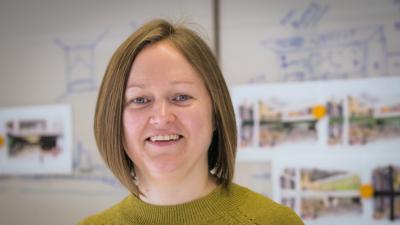The Mobility Hub future-proofs Ancoats by embedding green transport choices, smart logistics, and shared services into the heart of an emerging and sustainable neighbourhood.
Designed for Manchester City Council and funded by Homes England, this innovative project removes parking from individual residential developments. It promotes a shift away from car ownership in response to the community’s desire to prioritise people over vehicles.
Included are electric car spaces, secure cycle spaces, showers, and an electric car-sharing club, giving residents greener transport options.
The mobility hub accelerates the move away from petrol and diesel vehicles, improves air quality and protects the environment. By bringing together parking in one place, the Hub will also ensure future developments are car-park free, and urban designers can focus on creating places for people to relax and enjoy.
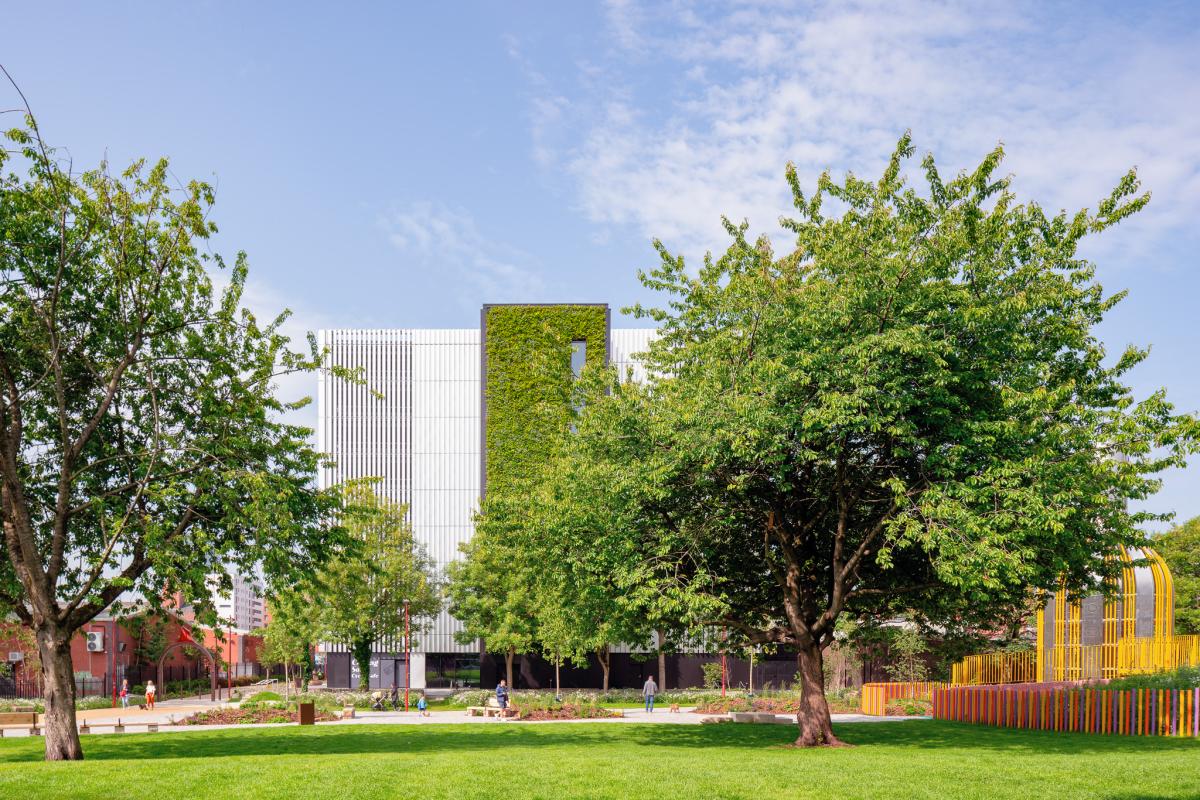
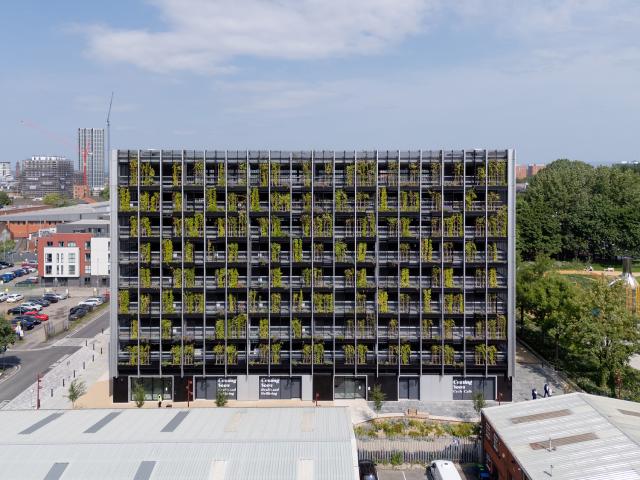
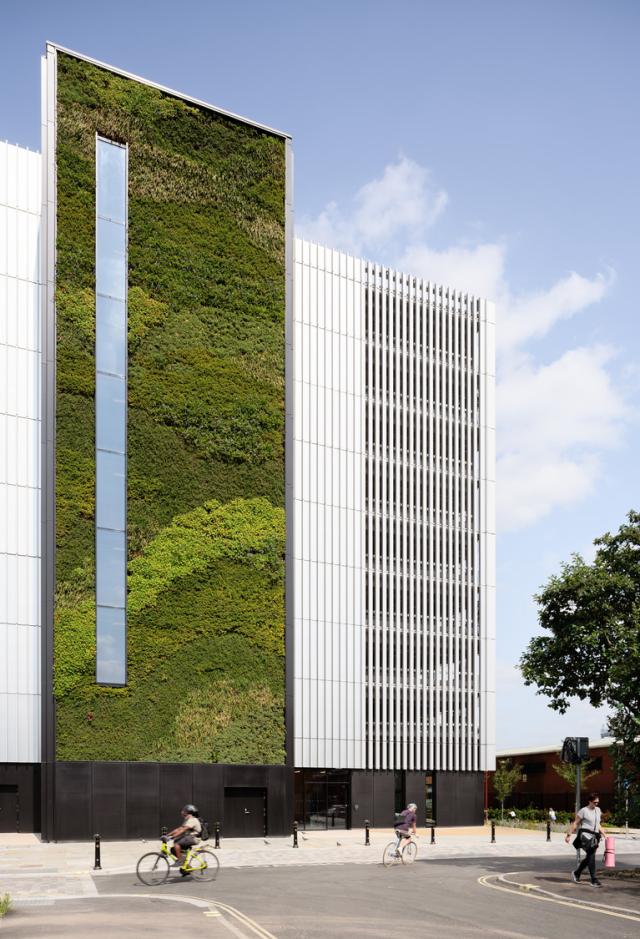
To limit the number of delivery vehicles, a locker hub is housed on site to receive local deliveries and parcels. The target is to reduce the travel of delivery vehicles through the neighbourhood by 1200km a day.
At ground floor level, a large cycle café is moving into the hub, connecting into the philosophy of green travel and activating the street frontage. This café faces onto a significant area of new public realm, which is accessible to pedestrians and cyclist with seating areas, planting and opportunities for outdoor café dining. This is also a key route connecting into Ancoats Green.
In keeping with the sustainable focus of the building, the Mobility Hub includes a significant element green façade and a modular living wall. This has been designed to remove air pollutants, including carbon, and improves biodiversity. It also reduces the amount of visible structure, screening the car park, and limiting light spill from within. The growing structure is given order through the use of dark metal and vertical fins, which add further contrast and variety to the façade design.
Silver anodised aluminium fins will wrap the majority of the main building structure, creating a stark contrast to the dark painted metal structure behind. At ground level the building is wrapped by dark aluminium panels, with contrasting light metallic panels used to emphasise the location of commercial entrances along the new pedestrian/cycle street.
At roof level, the entire surface is covered with more than 700 PV panels to minimise energy consumption with the percentage of power being generated by renewable energy will be visible to passers-by through digital displays installed on the façade
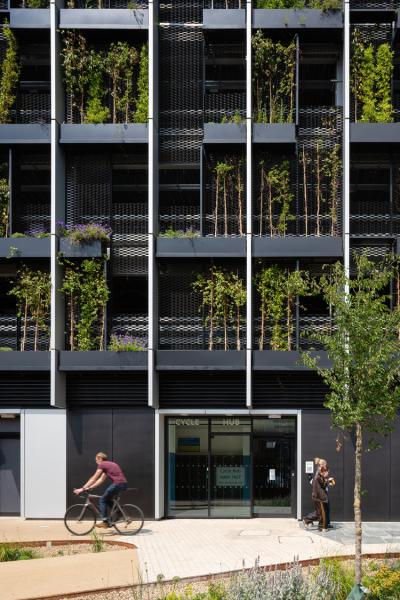
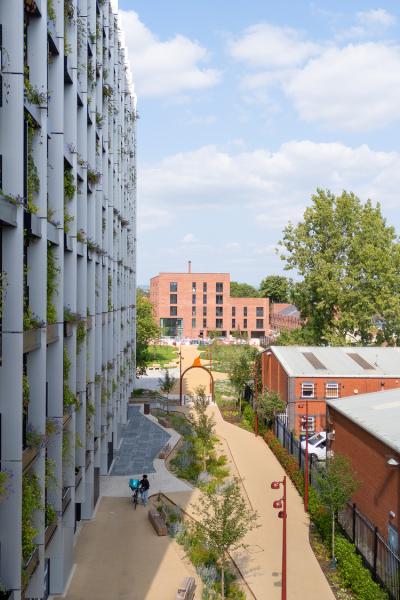
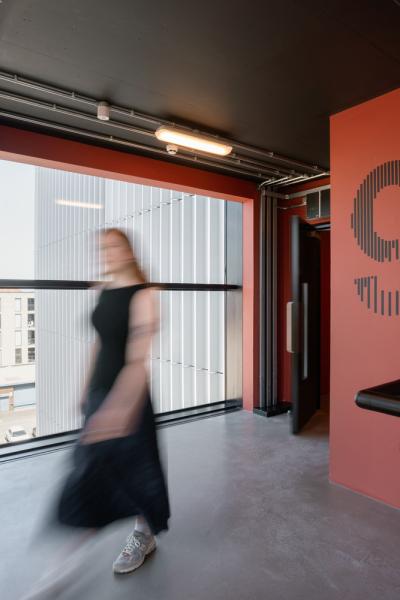
Image credits
CGI visuals © Virtual Planit
photos and film © Gavin Stewart
Matthew Burl
Matthew is an architect and director at Buttress who has led the successful design and delivery of new build and refurbishment projects across a range of cultural, academic and community-led sectors, both regionally and internationally.
He also coordinates the practice's sustainability activities and has led Buttress' B Corp journey helping the company achieve certification at the end of 2022.
Heather Leeson
Heather is an associate with experience across a broad range of commercial sectors, including workplaces, retail, hospitality and hotels.
At Buttress, she is currently supporting the development of a number of significant commercial schemes.
Michael Whitley
Michael has recently joined Buttress as a Senior Architectural Technologist, passionate about creating good quality design solutions, with extensive experience working on live projects through all stages.

